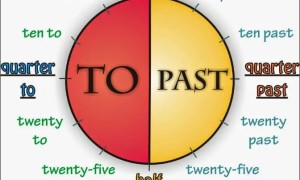1. 表达惊叹、强调特定词语
最简单的倒装句就是主语与动词的顺序调换了。如果有助动词的句子,顺序就会变成:助动词→主语→动词。如果是想要大力强调句子中的「形容词」,顺序就该是:形容词→动词→主语。
基本的倒装句只有主词与动词的调换:
原装:
主语 + 动词
Subject + verb
(Example)
I (subject) + am (verb) + glad to see you.
I am glad to see you.
我高兴看到你。
倒装:
动词 + 主语
Verb + subject
(Example)
Am (verb) + I (subject) + glad to see you!
Am I glad to see you!
真高兴看到你。

有副词的话主语与动词就交换位子:
原装:
主语 + 助动词 + 动词
Subject + auxiliary verb + verb
(Example)
It (subject) + is (auxiliary verb) + raining (verb) cats and dogs outside.
It is raining cats and dogs outside.
外面倾盆大雨。
倒装:
助动词 + 主语 + 动词
Auxiliary verb + subject + verb
(Example)
Is (auxiliary v) + it (subject) + raining (verb) cats and dogs outside.
Is it raining cats and dogs outside.
外面真是倾盆大雨。
要强调形容词时,形容词与主词换位子的句子:
原装:
主语 + 动词 + 形容词
Subject + verb + adjective
(Example)
The scenery of the Taipei 2010 Flora Expo (subject) + was (verb) + so beautiful (adjective), the visitors were moved by the dazzling flowers.
The scenery of the Taipei 2010 Flora Expo was so beautiful, the visitors were moved by the dazzling flowers.
台北2010花博的风景如此美丽,参观者被灿烂的花感动。
倒装:
形容词 + 动词 + 主语
Adjective + verb + subject
(Example)
So beautiful (adjective) + was (verb) + the scenery of the Taipei 2010 Flora Expo (subject), the visitors were moved by the dazzling flowers.
So beautiful was the scenery of the Taipei 2010 Flora Expo, the visitors were moved by the dazzling flowers.
如此美丽的台北2010花博风景,参观者被灿烂的花感动。
2. 强调时间的观念
时间副词 (time adverbial) 通常是出现在主语或动词的后面。可是如果把它搬到句子的最前面,会大幅度的把注意力拉到相关事件的时间概念。就像是讲故事给小朋友听的时候,如果加强「从来没有」、「经常」、「难得」、「事到如今」、「只有这个时候」的用语,会让听到的人对故事中事情发生的顺序或频率印象深刻。
强调 “only after” 的句子:
原装:
主语 + 动词 + 时间副词
Subject + verb + time adverbial
(Example)
A session of yoga practice (subject) + is (verb) + completely finished only after (time adverbial) +the corpse pose (final relaxation).
A session of yoga practice is completely finished only after the corpse pose (final relaxation).
一段瑜珈练习要到「尸式」(大休息)后才完全结束。
倒装:
时间副词 + 动词 + 主语
Time adverbial + verb + subject
(Example)
only after (time adverb) + the corpse pose (final relaxation) + is (verb) +session of yoga practice (subject) + completely finished.
only after the corpse pose (final relaxation) is a session of yoga practice completely finished.
要到「尸式」(大休息)之后一段瑜珈练习才完全结束。
强调 “around the clock” 的句子:
原装:
主语 + 动词 + 时间副词
Subject + verb + time adverbial
(Example)
The web developer (subject) + worked (verb) + around the clock (time adverbial) + to attract more viewers.
The web developer worked around the clock to attract more viewers.
网站开发人员为了吸引更多的观众不停的工作。
倒装:
时间副词 + 动词 + 主语
Time adverbial + verb + subject
(Example)
Around the clock (time adverbial) + the web developer (subject) + worked (verb) + to attract more viewers.
Around the clock the web developer worked to attract more viewers.
不停的工作的网站开发人员是为了吸引更多的观众。
调动 “until after” 的位子来整理文字中的时间逻辑:
原装:
主语 + 助动词 + 动词 + 连接词 + 主语 + 助动词 + 动词 + 时间副词 + 相关事件
Subject + auxiliary verb + verb + conjunction (that) + subject + auxiliary verb + time adverbial + related event
(Example)
I (subject) + didn’t (auxiliary verb) + realize (verb) + that (conjunction), + I (subject) + didn’t (auxiliary verb) + have (verb) any money + until after (time adverbial) + I ordered coffee at the corner coffee shop (related event).
I didn’t realize that, I didn’t have any money until after I ordered coffee at the corner coffee shop.
我在巷口的咖啡店点了咖啡之后才发现我没有钱。
以上的例句的开头是 “I didn’t” ,因为时间副词 “until after” 在中段才出现。与后段的事项比较,在时间副词之前所表达的是在那时候还没有发生的事情(realize that I didn’t have any money)。
倒装:
时间副词 + 相关事件 + 主语 + 动词 + 助动词 + 主语 + 动词 + 连接词 + 主语 + 助动词 + 动词
Time adverbial + related event + subject + verb + auxiliary verb + subject + verb + conjunction (that) + subject + auxiliary verb + verb
(Example)
Not until (time adverbial) + I (subject) + ordered coffee at the corner coffee shop (related event) + did (auxiliary verb) + I (subject) + realize (verb) + that (conjunction), + I didn’t (auxiliary verb) + have (verb) any money.
Not until I ordered coffee at the corner coffee shop did I realize that, I didn’t have any money.
直到我在巷口的咖啡店点了咖啡之后才发现我没有钱。
以上的例句一开头就是时间副词 “until after”,而中段是 “did I realize”。因为时间副词一出现,就把句子的时间概念给带到相关的地方,表示从时间副词之后 “I didn’t have any money” 的事项已经被发现了。与原装的句子比较的话,就可以看得出来不同说法的差异,可是两者表达的是一模一样意思。细微的比较凸显英文文法直线条的逻辑性,值得学英文的人多注意!
3. 凸显地点副词
用来表达地点的副词 (place adverbial) 通常也是出现在主语或动词的后面。把它搬到句子的最前面,也会把注意力拉到「相关事件发生的地方」。
强调 “under the stairs” 的句子:
原装:
主语 + 动词 + 地点副词
Subject + verb + place adverbial
(Example)
The homeless kittens (subject) + slept (verb) + under the stairs (place adverbial).
The homeless kittens slept under the stairs.
无家可归的小猫咪们睡在楼梯下面。
倒装:
以下这两种都是可以使用的倒装句型:
地点副词 + 动词 + 主语
Place adverbial + verb + subject
地点副词 + 主语 + 动词
Place adverbial + subject + verb
(Example)
Under the stairs (place adverbial) + the homeless kittens (subject) + slept (verb).
Under the stairs the homeless kittens slept.
楼梯下面睡着无家可归的小猫咪们。
强调 “onto my memory” 的句子:
原装:
主语 + 动词 + 地点副词
Subject + verb + place adverbial







